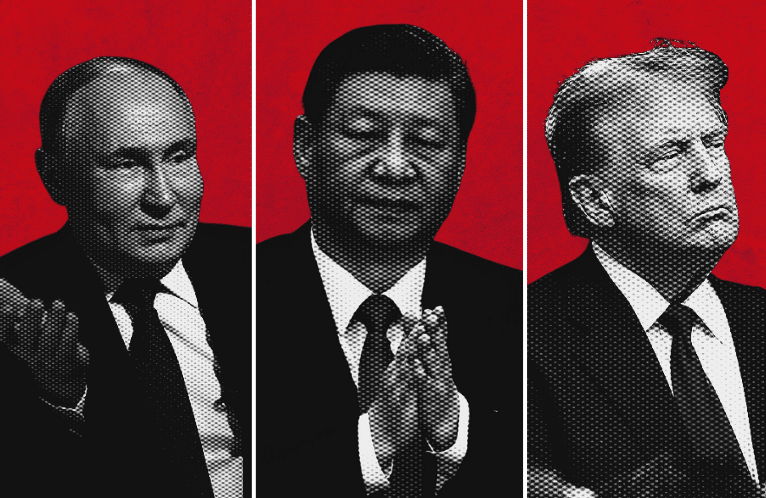Renminbi Bears Rethink Currency Bets
If a speculator-loathing central bank were planning a victory celebration, it could do worse than make its currency free to borrow offshore, while pushing its exchange rate to its strongest this year.
That, in effect was what happened to the renminbi last week, whether or not the People’s Bank of China intended it.
The end of a quarter that began with hedge funds and others making big bets against the Chinese currency finished with short-term renminbi borrowing rates in Hong Kong turning negative for a day — the first-ever such event — and the onshore rate being fixed at its strongest rate since mid-December.
Between now and the height of renminbi drama in early January, when China bears felt vindicated by a sharp weakening in the offshore rate, investors have faced a formidable adversary in the form of the PBoC.

The central bank has directly intervened in both the onshore and offshore currency markets, introduced new bank capital requirements and drawn heavily on its reserves.
The result has been a deep rethink among investors and a reduction in the size of their positions. The question now, particularly for hedge funds licking their wounds, is whether a bearish view on China’s economy and one that entails a much weaker currency will prevail in the coming months or not.
“A lot of people still believe the currency has to adjust lower — and we are of that view — but the question now is how that will happen,” says Paul Mackel, head of emerging markets currency research at HSBC. “It probably won’t happen as violently as people thought before.”
The troublesome offshore market, where international investors express views, has been subdued for one. Intervention as well as new reserve requirements have drained liquidity.
“Since August 2015 [when China conducted a one-off devaluation] the offshore market has imposed significant challenges to the PBoC’s efforts to stabilise the renminbi,” says Xiangrong Yu, strategist at CICC. “In particular, the wide spreads invited massive cross-border arbitrage and worsened market expectations amid the depreciation pressure.”
Renminbi deposits in Hong Kong, the centre of the offshore market, had dropped to Rmb804bn ($124bn) by the end of February — their lowest in more than two years, and down a fifth from their peak in late 2014.
Strategists say reserve requirements probably caused overnight interbank borrowing costs for renminbi in Hong Kong to turn negative last week. The PBoC assesses banks on a quarterly basis for reserve requirements, which were applied to offshore deposits for the first time in January, meaning banks last Thursday in theory had an interest in making deposits smaller — even if in practice that means paying borrowers to take funds.
The result is a market that is more similar to its onshore cousin.
“The renminbi is controlled and it will be controlled. It’s not a free market; the PBoC is the biggest player and we all know that,” says one senior banker at a mainland institution, who doesn’t expect more dramatic moves this year.
According to a survey by Reuters of non-deliverable forward positions — one way short bets are expressed — investors are still slightly short renminbi, but those positions are less than a quarter of their January peaks.
That tallies with anecdotal reports from bank trading desks and hedge fund brokers.
“There are medium-term funds that went into 2016 with short-China as a relatively core position and it hasn’t performed — however, it probably hasn’t caused enough pain to be restrictive,” says Asher Williams, head of rates and macro sales at Société Générale for Asia-Pacific ex-Japan.
He adds: “More generally, people are struggling to understand what comes next — volatility in the fixing continues to increase, and it could well be more of the same in terms of uncertainty, short term at least.”
One strategy gaining traction is to focus more on the renminbi’s moves against currencies other than the dollar. Measured against the PBoC’s own basket of currencies, known as CFETS and against which it ostensibly tracks the renminbi, the Chinese currency has fallen 1.6 per cent in the past month, reaching its weakest since November 2014, according to ANZ.
“While there could be a period of consolidation — or even a modest upward retracement — in the near term, we see the risk that the PBoC will continue to guide the index on a broadly easing trend in the coming months until the Chinese economy stabilises, or rebounds,” says Irene Cheung, senior foreign exchange strategist at ANZ.
The Federal Reserve could also help the renminbi bears. While dovish comments by Janet Yellen, the Fed chair, in the past week helped the renminbi higher as the US dollar sank, analysts warn against reading the moves as a new trend.
“You still have to think that the Fed is going to hike at some point and the PBoC will be easing policy — and that rate differential will weigh on the renminbi. This is a tale of two currencies, not just China,” Mr Mackel says.
By JENNIFER HUGHES Apr. 4, 2016 on Financial Times
Read more here








